Lads of Liberty: Presston Brown, Project Manager at ESI Design
Posted June 17, 2019
Earlier this month, the new Statue of Liberty Museum opened on Liberty Island with experience and exhibits by ESI Design. The new museum is part of a $100 million Liberty Island-wide beautification effort that is funded by our clients, The Statue of Liberty-Ellis Island Foundation.
To celebrate we’re sharing the stories of some of the talented people who have worked for over five years to bring this world-class museum from concept to opening day.
In this edition, you’ll hear from Presston Brown, Project Manager at ESI Design, who worked on the experience and exhibit design for the museum. Presston drove the design process of the museum at ESI Design for over four years.
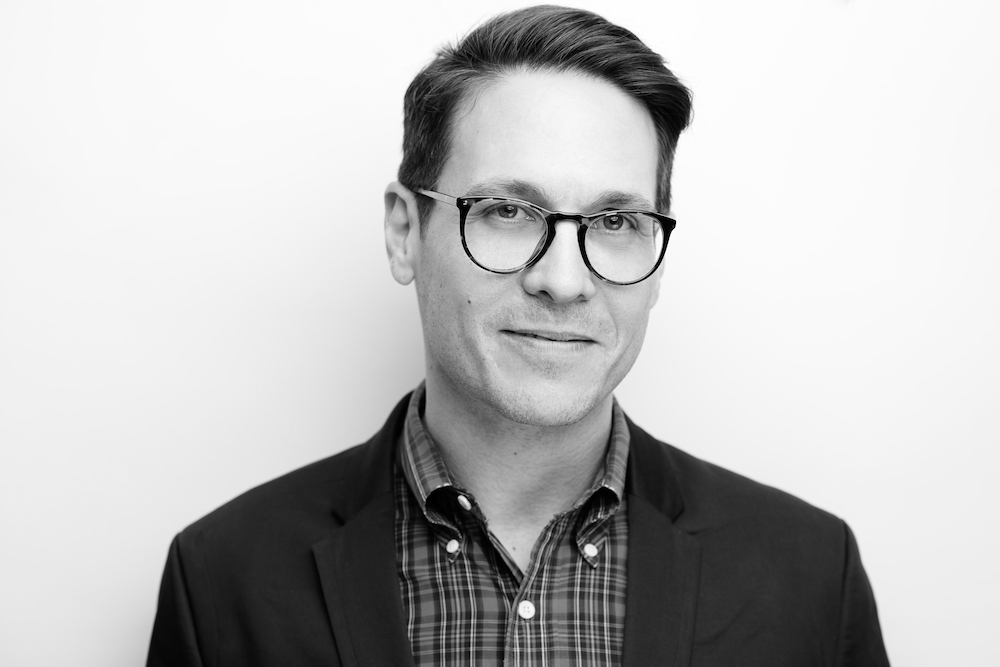 Name: Presston Brown
Name: Presston Brown
Job Title: Project Manager, ESI Design
Years of Experience: 44
Age: 44
Nationality: United States
Languages Spoken: English, and a few words in Spanish
Education: Bachelor of Arts, Art/Art Studies from Arizona State University and a Certificate of Carpentry from Los Angeles Trade Technical College.
What was your first encounter with the Statue of Liberty?
Presston Brown, Project Manager: It was in 1988. I grew up with a fear of heights and also a love of New York City, at least what I saw in movies like Big. When I was asked what I wanted to do when I graduated middle school, I said I wanted to go to the Big Apple, of course. My plan was to visit the Statue of Liberty and the Empire State Building and go to the top of each to conquer my fear of heights. Then, when we got here and went to the Statue, the crown was closed for the day and in a cab on our way to the Empire State Building one of the floors caught fire and they closed the building. I lived with my fear of heights, until I moved to New York City in 1997 and on my 23rd birthday I visited the Statue to fulfill my destiny and finally conquer my fear. Alas, I once again arrived too late to visit the crown but I did not give up. I showed the park ranger my California ID and explained that it was my lifelong dream to visit the crown to conquer my fear and this was my birthday and the only day I could be there. He generously understood my plight and allowed my friend and I and quick visit to the crown. We ran up the spiral stairs as fast as we could and stopped at the top to look out the windows, feel very light headed, and take one quick triumphant photo of me alone in the crown. I had finally beaten my fear and joined the Statue in viewing the city and the world from above with an open heart and an unafraid spirit.
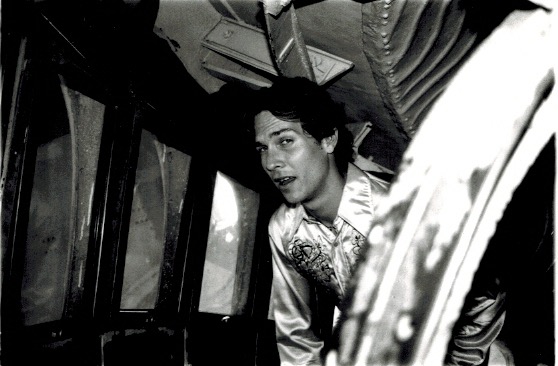

Presston Brown in the Crown of the Statue of Liberty on his 23rd birthday, conquering his fear of heights.
What was your role on the project? What did that mean for you day-to-day?
PB: I started as Project Manager as ESI Design was revising the initial concept design for the museum and continued to its final installation and opening to the public, almost 4 years. During the design phases, my day to day consisted of collaborating with and coordinating our 10+ person design team. The design for the museum went through numerous iterations, including an extra phase after final design when the bookstore for the museum was cut from the overall design. The Inspiration Gallery went through the most changes during design. It was a focal point for the narrative of the museum and would be the anchor of the visitor experience. I remember many long nights in the office with the physical and interactive designers working on different options for an interactive we wanted to be in the gallery to balance the emotional effect of the original torch. Following our final design presentation, the museum team was still not 100% satisfied with the effect, and I had meetings with the client and review the design and talk more about the bookstore, which had already been moved once or twice before. That final 6 week redesign phase, to see what we could do with the space, ended up being the most intense and important step in the museum’s evolution as the team came up with a beautiful way of combining two exhibits that were in the final design into one interactive experience we called Becoming Liberty. I was nervous setting up the client review for this redesign as it included the Statue of Liberty-Ellis Island Foundation, National Park Service, and the History Advisory Committee and so much was riding on this new idea and our fighting to remove the bookstore and use that space for something better. Luckily it was a big hit and ended up being exactly the anchor the visitor journey needed and a perfect balance to the torch in the Inspiration Gallery.
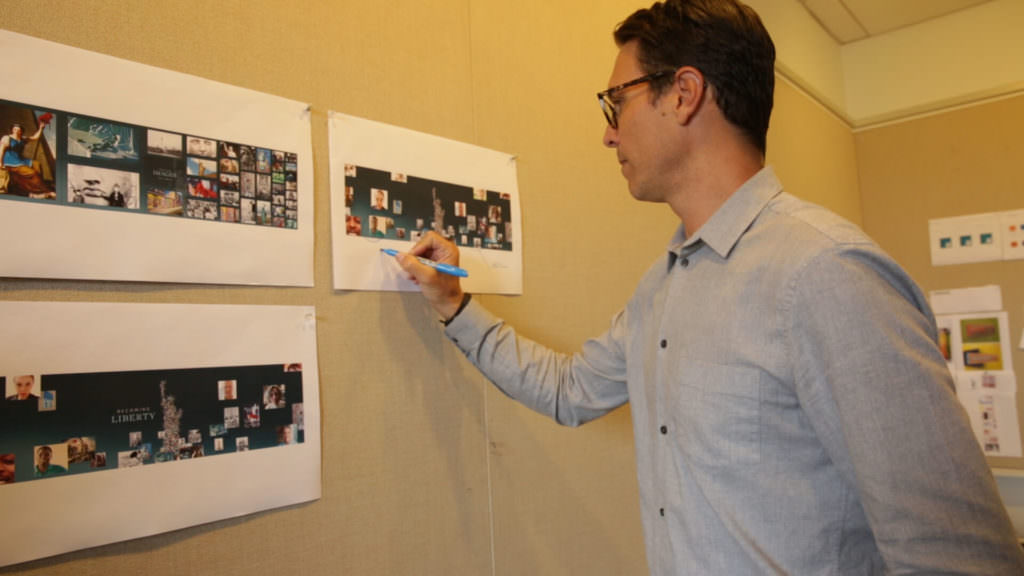
Then, during production the ESI team was onsite almost every week for about a year of the 18 month production phase. I was there at the beginning to ensure the design intent was understood, and at the end to ensure the quality and accuracy of the exhibits to our original design. We had many visits to Maltbie’s shop, where the exhibits were being built, where I used my background in carpentry and exhibit construction to offer advice on the best way to build and install everything. This helped when the team arrived onsite and the inevitable last minute adjustments were needed and I could help suggest solutions. This helped out in the pedestal area of Constructing Liberty where we have projected graphics and the projector could not be placed where it was needed because of a large air conditioning duct for the museum. We solved the problem by moving the wall where the projection was needed and adjust the content slightly, which ended up being a great solution as it allowed for better viewing angles of the artifacts and graphics.
You just opened a new museum for the Statue of Liberty — how does that feel? What does that mean to you?
PB: The Statue of Liberty Museum has been the most important project of my life, and I feel incredibly lucky that I got to be involved in the design. The Statue is, in my opinion, the most powerful physical symbol of freedom in the world. I believe that its enduring legacy as that symbol has made the world and better and more thoughtful place since its dedication in 1886. It was amazing to be part of the museum celebrating that legacy and the exhibit design that was set up in a way to challenge visitors to think about what the Statue and liberty mean to them. The museum is not only celebrating the Statue as a symbol but also lifting up the meaning of liberty and adding to liberty’s legacy in the future. It is incredible to think that I had a hand in creating that new story and elevation of importance for everyone who visits the island and that it will exist for many years to come.
Why is having a museum dedicated to the Statue of Liberty important?
PB: The museum is adding to the story of the Statue and will live alongside this 133 year old global icon of freedom to increase the meaning and importance of the Statue. Visitors will have a much more engaged, informed, and resonant experience than they did before, and that is exactly what I think museums are meant to do. They show us the importance of our collective history on the planet and put moments and ideas on display so we can learn about what came before and where we are going together in the future.
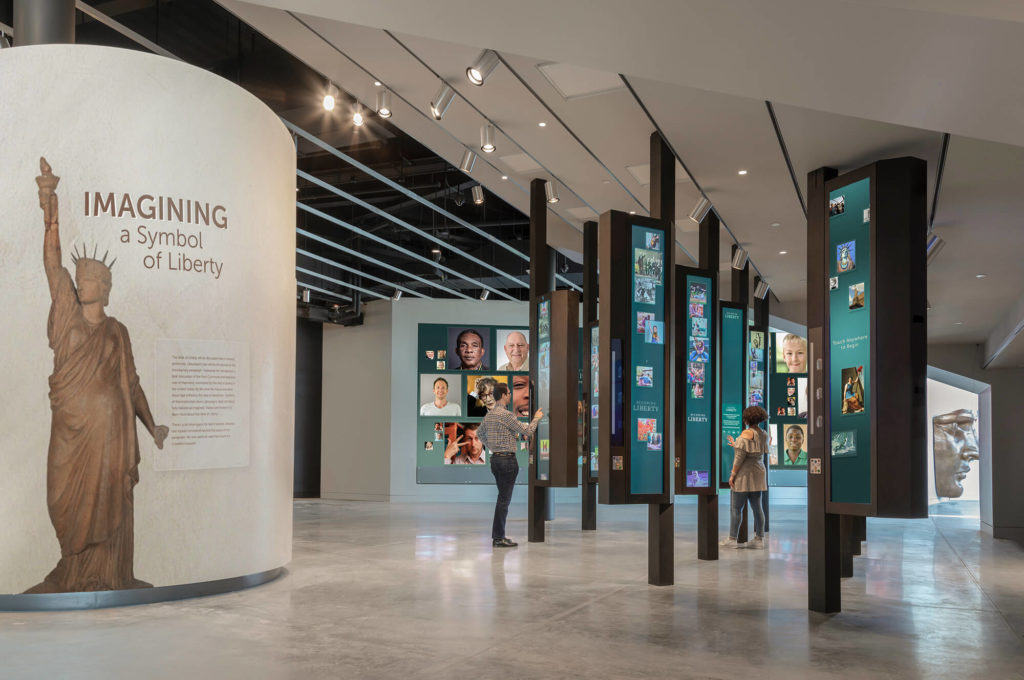
After working on this project, has your concept of liberty evolved?
PB: Since working on this project the idea of liberty has become a daily thought in my head, and what it means to me is a question I ask and answer for myself. I am forced to remember its importance to me and the world. The existence of liberty is the reason human life still exists and for our evolution as a species that has gone from our primitive ancestors to the new levels of health care and global problem solving like curing hunger, lack of water, natural resources, and fighting oppression.
Do you have a unique/special connection to Lady Liberty?
PB: I think of Lady Liberty as the mother of America and have always looked up to her as the guiding light of freedom for the world. I never dressed up as her for Halloween but have admired those who have and enjoyed her in films growing up.
What were the steps in your journey to this iconic project?
PB: I was working at the American Museum of Natural History managing their traveling exhibitions and enjoying it, but looking for more creative involvement. There happens to be a lot of crossover of designers and managers between the American Museum of Natural History and ESI Design, and I was recommended by a coworker to ESI and came to interview. I then learned about the project and was very interested and was chosen to be the museum’s Project Manager. The move to ESI was amazing and life changing in one of the most positive ways I have ever experienced and led down the path to be on the most incredible project, building the museum.
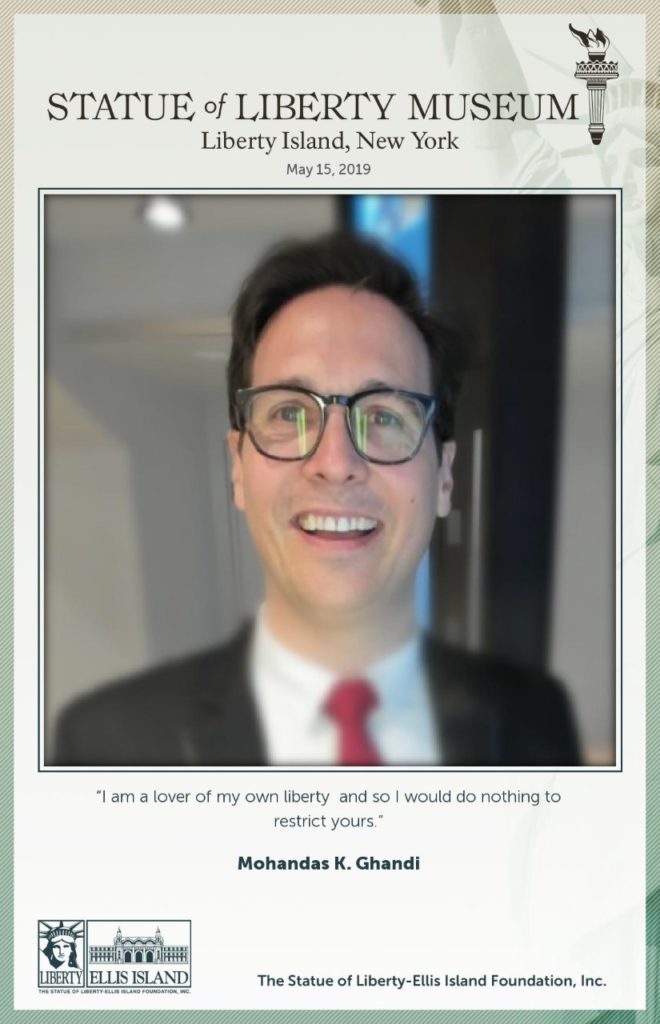
Since you started your career, what’s the biggest change you have seen in the world of design?
PB: The biggest change in museums in the last 5 years is the inclusion of digital media and interactives using new technology to engage visitors in new ways. The interactives I have seen involve VR, AR, touchscreens, and gesture-based interactions with screens. These allow visitors new ways to see content and, in some of the most successful versions, to leave their own content and take some home with them so they have a digital souvenir forever. It was with this in mind that ESI Design developed Becoming Liberty, which engages visitors in those ways, and has quickly become the most popular exhibit in the newly opened Statue of Liberty Museum.
What advice would you give to your younger self starting a career in design?
PB: My advice to anyone wanting to follow my footsteps is to put yourself in situations where you can lead and problem solve as much and as often as you can. The more you learn how to lead in your own way and put your methods into action, the more it will push you faster towards the most successful techniques you can use in all aspects of life. The other thing that has helped me get here was learning how to work well in groups, which is vastly different than working alone and different depending on the size of the group. Starting small with leading groups on 2 or 3 is great but you have to keep building on that so you can manage 20 people doing 10-20 different tasks in unison to complete objectives. The more intimidating something seems, the more important it is to overcome your fears and tackle the problem. As you start with small groups you will find ways of organizing and delegating that will then help as you build up so that the number of people on your team will not matter, the organization you develop for yourself will be the tool that makes things work and pushes the team to successful outcomes. Finally, the most important thing is commit to the things you do 100%, care about them more than anything else you are doing at that moment, and never lower the standards you set for yourself. Then, you will always find a way to make things work so you are happy in the end, which usually leads to a happy team, happy clients, and amazing projects.
If you were giving a tour of the new museum, what would be your top highlight?
PB: The thing I really love most about the museum is the footage of the Statue in the Immersive Theater film. The current NPS and FAA guidelines do not allow filming inside the Statue and drones cannot come within 400 yards of the monument, as a security precaution because of its iconic status in the world. When the film was originally conceived the 2nd node of the theater was designed to give all visitors to the island a chance to go inside the Statue and have a dramatic flight around the outside with a view of the broken shackles at her feet, which is only visible from above. When we started working with the production team from Disney, who helped produce the film, I mentioned the idea of shooting the Statue using a drone and we scouted the site with a drone crew to assess the feasibility. We all agreed it would be the most fantastic way to shoot and show the Statue in great detail up close so viewers would get a one of kind experience in the theater. When I approached NPS I got a no with a brief explanation of the restrictions I mentioned. I asked again and explained the need and use of the footage and got an even firmer no from the superintendent of Liberty Island.
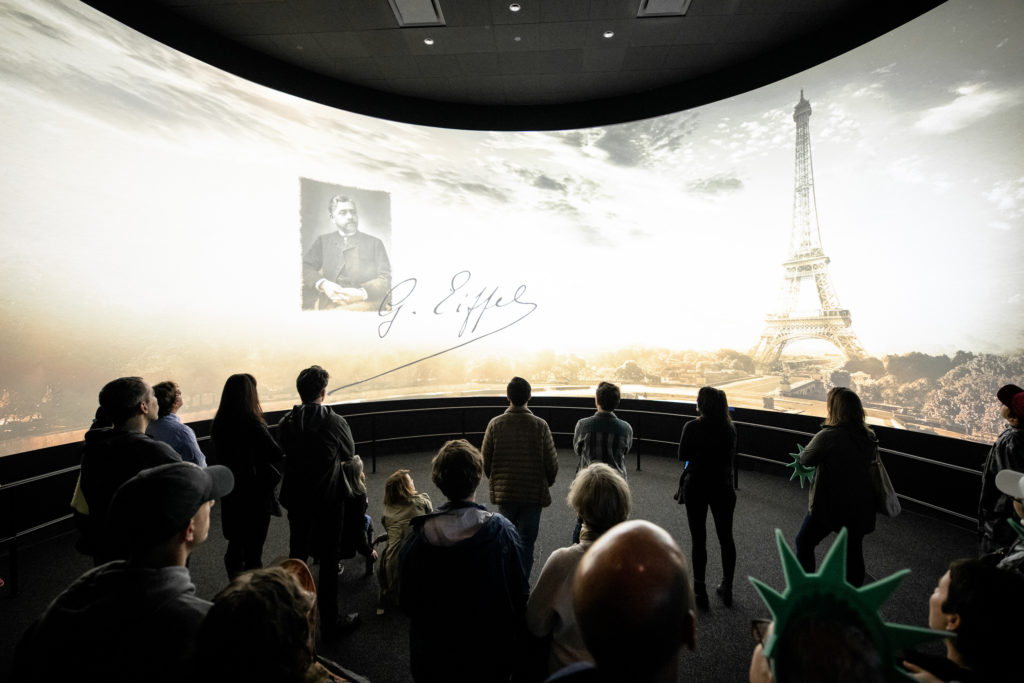
I am not one to take no for an answer when it is something this important, so I enlisted the help of the Foundation to work with NPS to get the drone shoot approved. We created a presentation showing flight paths, former Navy drone pilots, and examples of shots that could be achieved. At that point we got a maybe and the superintendent went all the way up to the top of the DOI and FAA to request permission. We had to put together another more detailed package to present to that team for review, and just as they were about to approve things the government shut down. We had a small window of good weather at the end of 2018 we were hoping to use for the shoot but missed out because of the shutdown, but when things reopened we were blessed with a week in February in which we could shoot, and we got approval as soon as the government reopened. When putting things in place for a shoot of this size in a couple weeks, we determined the only way to accomplish the shoots was to have the crew spend the night on the island, which actually meant spending the night in the new museum as it was the only really habitable place on the island.
Luckily, they didn’t need me, and they got good weather and were able to get the shoot before the storms and just in time to begin processing and editing into the overall film before the opening in May. When I watch the film now I am reminded of all the little things that could have gone differently that would have stopped us from getting the amazing shots and would have ended up with a very different film for visitors, and how beautiful and amazing it looks now, and how I had a little part in making that happen.
To read the rest of the interview series, click here. If you have any questions for Presston, sound off in the comments!


Join The Conversation